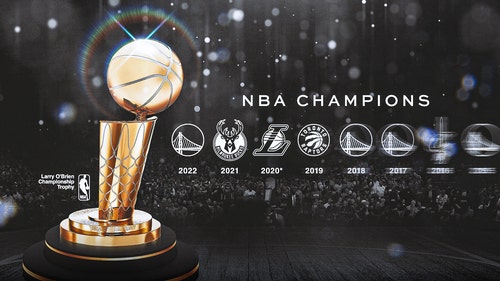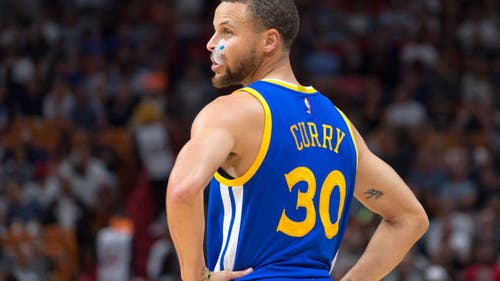
Celtics put all the pieces together to reach 2022 NBA Finals
By Yaron Weitzman
FOX Sports NBA Writer
It was just about a year ago today when the Boston Celtics, following a disappointing first-round playoff loss to the Brooklyn Nets, announced a shakeup of their front office.
The first half of the news release — that Danny Ainge, the team’s president of basketball operations, would be stepping down — did not come as much of a surprise. Ainge, after all, had held that role since 2003. Who could blame him for wanting to try his hand at something new?
The second half of the news, however, was shocking. Brad Stevens would be leaving his job as Celtics head coach — one which he had held since 2013 — and moving into the front office to run the team’s basketball operations.
Questions swirled about whether Stevens was fit to succeed in this new position. He was a natural coach, meaning he thought like a coach, a mindset that doesn’t always lend itself to success in a job that requires more long-term thinking.
But it was also unclear why, exactly, Stevens was moving into the front office. There were reports that coaching throughout the pandemic — and the NBA’s condensed schedule — had left him feeling burned out. If that was indeed the case, was the grueling job of running a basketball team really the right fit?
One year later it’s clear the answer was — and is — a resounding yes. It’s not just that Stevens is the man in charge of a Celtics team that, following a 100-96 victory over the Miami Heat in Game 7 on Sunday night, is now headed to the NBA Finals for the first time since 2010. It’s that they wouldn’t be there if not for Stevens nailing every major decision he has made in his first year on the job.
Yes, he inherited a roster that had advanced to the Eastern Conference Finals in three of the previous five seasons, thanks to a number of brilliant moves by Ainge. Trading out of the first pick to draft Jayson Tatum instead of Markelle Fultz. Drafting Jaylen Brown at No. 3, a slot that many at the time considered a reach. Snagging Robert Williams and then Grant Williams in consecutive drafts with picks in the 20s. Hiring Stevens to coach the group.
But as the Celtics’ longtime coach, it’s clear Stevens was uniquely qualified to determine what, exactly, the team needed to get over the hump. He alluded to this in the press conference last year announcing the shakeup.
"I do think I have a good insight into our team, as Danny now steps away," Stevens told reporters at the time. "I feel like I’ve got a good idea of what we do well, what we don’t do so well, and I’ve been doing this for eight years. I’ve been in that locker room with some of those guys for a long time."
Being there, it’s clear, gave him insight into what sort of tweaks he could make along the margins. No reset buttons were pushed. No major trades were made.
On the surface, this Celtics team is no different than the ones we’ve seen come up short in years past. It’s built around the two-way greatness of Tatum and Brown, with Marcus Smart and Al Horford filling in along the edges.
But this is not the same Boston team and watching the Celtics hold off the Heat in Game 7, you could see Stevens’ imprint all over the floor.
There was Horford, just two years after looking washed and after basically spending sitting out all of the previous season, playing 44 minutes of lockdown defense.
There was Smart — who Stevens signed to an extension in the offseason and then moved to point guard, a shift that unlocked the team on both ends of the floor — racking up 24 points and serving as the head of the snake for a smothering Celtics defense.
There was Derrick White — who Stevens traded for in February, a move part of a mini-roster overhaul meant to add defense and size and remove ball-stoppers such as Dennis Schroder — contributing eight points and strong defense off the bench.
And there was the league’s No. 1 ranked defense, the one constructed by first-year coach Ime Udoka, who Stevens hired as his replacement, holding the Heat to an ugly 42 percent from the field and 6-for-30 from deep.
In fact, plucking Udoka off the sideline of the Nets might have been Stevens’ best move. Udoka appears to be one of those rare coaches who can outduel opponents with his X’s-and-O’s but also knows how to manage the personalities of his players.
Where Stevens really deserves credit, though, is maintaining his patience. This Celtics season, remember, got off to a bumpy start. Players were bickering through the press. Udoka was criticizing his group’s play and decision-making. There was talk about whether it was time to break up the Tatum-Brown core. On Jan. 21, following a four-point loss to Portland, the Celtics fell to 23-24.
Soon after, thanks to some tweaks to the defense (a little less switching, shifting Robert Williams to more of a help role) and the roster maneuvering, the Celtics’ morphed into the NBA’s best team. They finished the season with the second-best record in the East, but, more tellingly, the second-best net rating in the entire NBA.
They’ve been a juggernaut all year, and now, after disposing of Kevin Durant, Giannis Antetokounmpo and Jimmy Butler, are just four wins from a title.
Brad Stevens’ decision-making from the front office isn’t the reason why. But it’s certainly one of the major ones, which, I think, just one year ago was not something many thought any of us would be saying.
Yaron Weitzman is an NBA writer for FOX Sports and the author of Tanking to the Top: The Philadelphia 76ers and the Most Audacious Process in the History of Professional Sports. Follow him on Twitter @YaronWeitzman.









